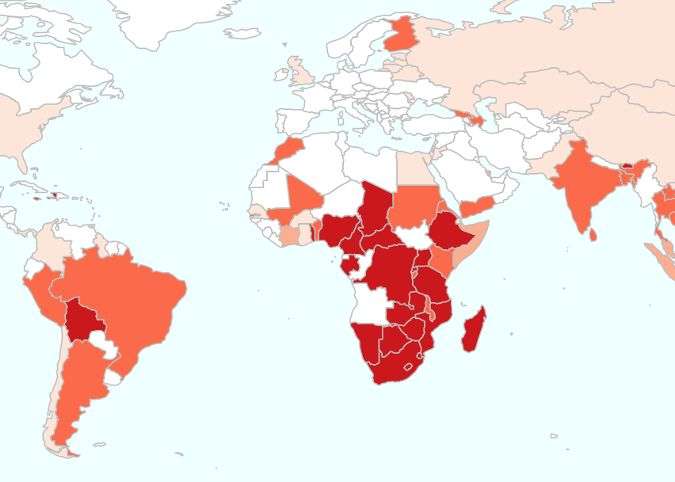A brief history of syphilis points to a neglected disease in sub-Saharan Africa

It is known that syphilis rates have varied much between different countries and populations over the past 100 years. A study published in PLOS Neglected Tropical Diseases collates a history of the disease and finds that while rates dropped world-wide in the post-penicillin era after 1945, they remained, up until recently, much higher in Sub-Saharan Africa compared with other regions.
Chris Kenyon, from the Institute of Tropical Medicine, Belgium, and colleagues asked whether there are lessons to be learned from the way syphilis rates have changed over time. To begin to answer the question, they mapped syphilis rates across time and place and examined whether possible explanatory variables such as geographical location, health care spending, or relative wealth, showed a correlation with the observed patterns.
The researchers started with a systematic review of countries with published antenatal syphilis prevalence (ASP) estimates from pre-1952 till the present. (Outside the routine testing of pregnant women, screening for syphilis and other sexually transmitted infections (STIs) is often biased toward high-risk populations, and the ASP estimates are therefore thought to better represent how common the disease is among the general population of sexually active adults.)
The systematic review identified 11 countries for which data were available for the past century. For the US and South Africa data were good enough to differentiate between the white and black populations. In most countries, ASP dropped below 1% after penicillin became widely available, and well before 1960. In black South Africans and in Zimbabwe, however, syphilis prevalence remained around 6% until 50 years after the introduction of penicillin. In black US Americans, the prevalence also remained high after an initial post-penicillin drop, and continues to be several times higher than in whites to this day.
The researchers then searched for more studies of ASP for the 1990s and analyzed data for all countries that had estimates for both the 1990s and for 2008. They found that the prevalence of syphilis plummeted in a number of countries where it had remained high around the time of the AIDS epidemic in the late 1990s. This decline had been attributed in part to the widespread introduction of systematic STI management and changes in sexual behavior, and partly because AIDS deaths broke up many sexual networks. Despite the decline, ASP remained significantly higher in sub-Saharan Africa in 1990-1999 and 2008 than in other regions.
Finally, the researchers used the 1990-99 and 2008 national estimates to assess if four potentially relevant country-level factors, namely access to efficient syphilis screening and treatment, health expenditure, GDP per capita, and circumcision prevalence, were correlated with syphilis prevalence over that time period. The consistent correlation was between the location in sub-Saharan Africa and ASP. In contrast, the researchers found no evidence of an association between ASP and GDP per capita, health expenditure, screening/treatment, or circumcision prevalence.
The researchers review other evidence that found strong correlations between syphilis prevalence and those of Herpes Simplex Virus-2 prevalence and HIV prevalence. They argue that their study contributes to this increasing body of evidence that finds that populations with high HIV prevalences had higher rates of other syphilis and HSV-2 in the pre-HIV era. They go on to suggest that common risk factors may underpin the spread of all three of these sexually transmitted infections.. "Establishing what these factors are", they emphasize, "is of great importance to improve the health of highly affected populations such as those in sub-Saharan Africa". One hypothesis they mention is that more connected sexual networks may have been partly responsible for the higher prevalences of syphilis and other STIs in specific populations.
More information: PLOS Neglected Tropical Diseases, DOI: 10.1371/journal.pntd.0004711















